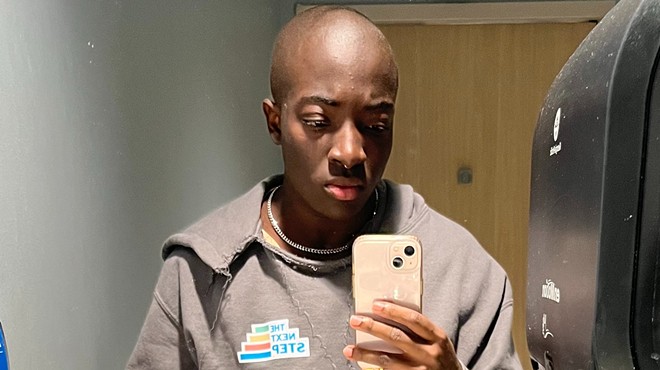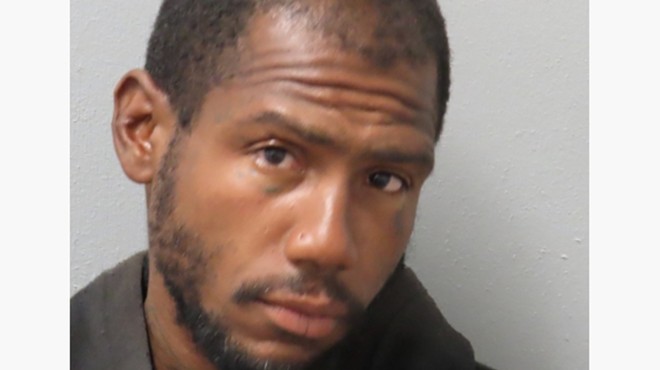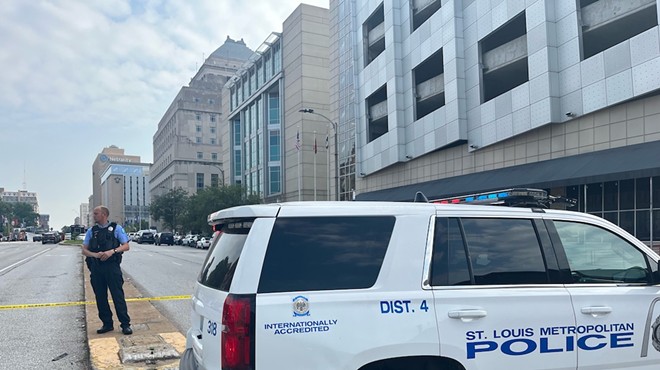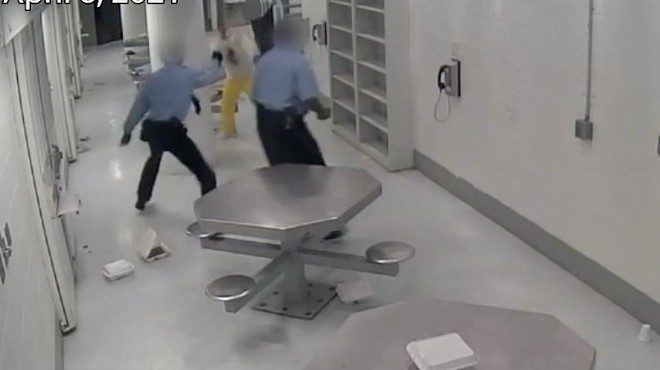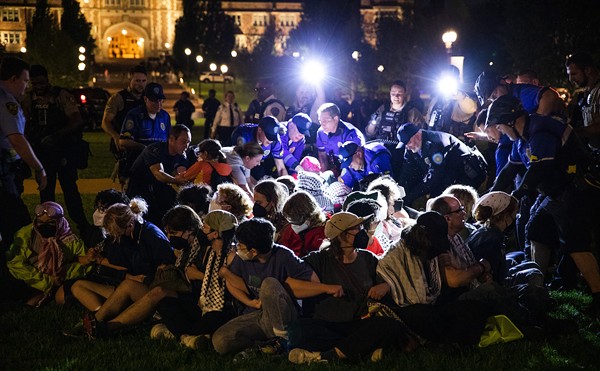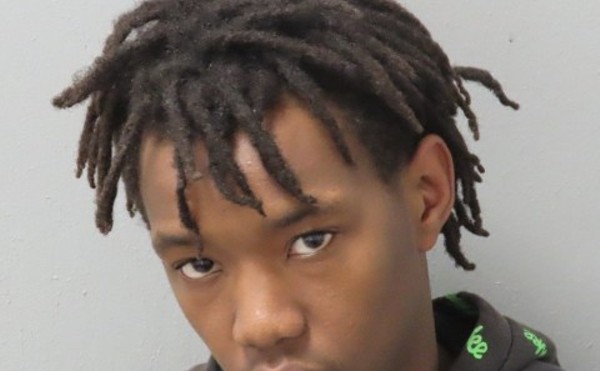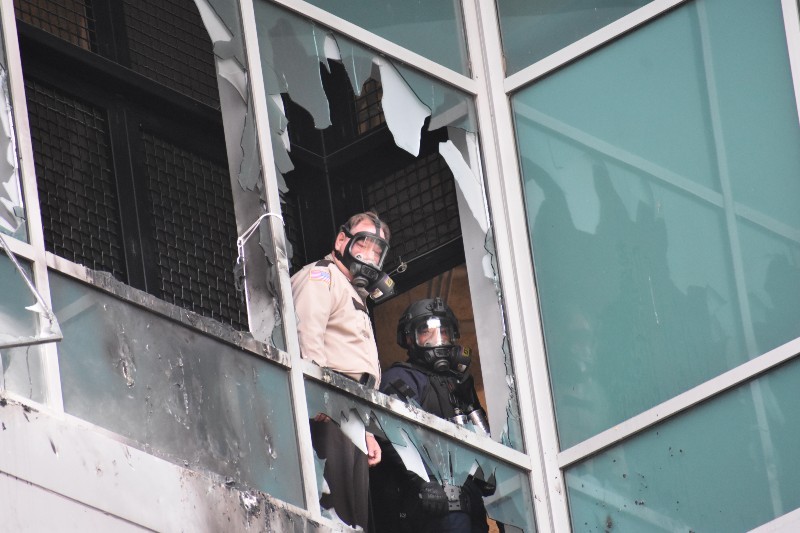
In the wake of the two riots at St. Louis’ City Justice Center in 2021, the Circuit Attorney's Office appointed a former federal prosecutor to investigate the causes of the disturbances. That investigation yielded a 37-page report.
But it’s not clear if the jail administration ever acted on its findings — much less shared it with key decision makers in the city. Until last month, the report appears to have been kept under wraps. Attorneys only recently got access to it as part of an ongoing lawsuit against the city over the conditions in the jail.
And that’s significant because jail conditions have again become a flashpoint, with a corrections officer being taken hostage in the midst of what’s been described as a riot. Tensions between Corrections Commissioner Jennifer Clemons-Abdullah and the jail's civilian oversight board hit a new high last Thursday night when the vice-chair of that oversight board was forcibly removed from the jail and charged with trespassing.
"I'm shocked at what is going on in the jail, but I'm not at all surprised," says Amy Breihan of the MacArthur Justice Center, whose lawsuit helped bring the long-buried report to light. "This has been happening for years."
Indeed, the two 2021 riots made national news and led to the ousting of Corrections Commissioner Dale Glass. Detainees set fire to a portion of the jail, broke out windows and threw flaming objects through the broken windows to the ground below in front of a crowd of journalists and other onlookers.
In the wake of the riots, the Circuit Attorney's Office appointed Reginald Harris as a special assistant circuit attorney to investigate their causes. Harris, now with the law firm Bryan Cave Leighton Paisner, interviewed more than a dozen jail staff and several detainees, reviewed surveillance footage and toured the facility. His investigation confirmed media reports at the time that the disturbances had been fueled by inmate aggravation over the heavy-handed use of mace, poor segregation of those infected with COVID from the general population, and a lack of recreation time and visits from family members.
The report also found that the February 2021 riot happened spontaneously, but that the one that occurred two months afterwards was planned in advance by detainees who hoped the media attention would get them court hearings.
Harris found that the first riot was caused by inmates growing irate over a guard macing a detainee around 1:15 a.m. on February 6. That night, two units on the fourth floor each held approximately 60 detainees, but only had one guard per unit. One of those two guards had previously told jail administration that “she did not feel safe working at the facility."
In one of the units, detainees unlocked their own cells, coming and going as they pleased without repercussion. It's “beyond dispute” that the jail's defective locks enabled the riots, the report says.
The unit was having rec time in the middle of the night when an agitated detainee refused to stay in the area he was supposed to. The lone guard maced that detainee.
That led to a scuffle breaking out between the detainee and the guard, who called for back-up. Back-up did arrive, but shortly thereafter the guards left the unit entirely. Then detainees began blocking surveillance cameras and destroying property. Detainees later broke out windows on the fourth floor, and the images of detainees at those broken windows made national news.
"The spark in the powder keg was a use of chemical agents that set off an uprising," says Breihan, who is representing detainees in the suit against the city through which Harris' report has now become public. The lawsuit focuses largely on what Breihan's clients claim is wanton use of pepper spray at the jail, including allegations that guards maced detainees in closed cells and then left them to "marinate."
Breihan says it’s no coincidence that mace was the catalyst.
"They knew about this being a problem and did nothing," Breihan says.
The report says that many of the guards were themselves concerned about the overuse of pepper spray, with one guard telling investigators the amount used was “exorbitant.” That same guard said that “officers excessively use spray on detainees in order to gain power.”
"[The report] is a really important piece of evidence, and really problematic that the city counselor didn't turn that over," says Breihan.
Breihan says that among the requests the plaintiffs' attorneys made as part of the discovery phase of the lawsuit were copies of all internal investigations the city made into the jail. However, she says, the St. Louis City Counselor's Office didn't turn the 37-page report over, despite the fact they were almost surely aware of it. Personnel from the City Counselor's Office sat in on the interviews conducted by Harris as well as took part in the on-site visit of the jail.
"My theory is that they either covered it up, or — and I think this might be more likely —- they just didn't do the due diligence of asking for these records," Breihan says.
The RFT reached out to the City Counselor's Office for comment. We will update the story if we hear back.
Breihan says that the attorneys representing the plaintiffs in the case also subpoenaed the Circuit Attorney's Office for any investigation they might have done into the jail. That office, then under Kim Gardner, produced the report as well as the transcripts of interviews it was based upon the night before a filing deadline in the case.
Breihan says she realized almost immediately what a big deal the report was.
"I cleared off my dining room table and went through it all. And it was the only time so far in my career where I've just been blown away by the import of the evidence produced at such a late stage in the game," Breihan says.
The report also covers the causes of the second riot that occurred at the jail in 2021, over Easter weekend that year. That riot was planned in advance, the report says.
Prior to the riot, one detainee said on a phone call,"I bet you they get to my case now." According to the report, this was interpreted as meaning that "after he gained media attention from the unrest, he would finally get a court date."
One corrections officer also told the investigators that detainees had told one of the guards on duty on the third floor that night to leave so that they could begin rioting.
Detainees again broke out windows, lit fires and threw objects out into the ground below. Some chanted, "We want court dates!" Again, the riots made national news.
About the broader culture at the jail, Harris' report states "there is reason to doubt" that the jail staff followed their own use-of-force policies and that multiple jail officials stated that guards tend to resort too quickly to pepper spray.
According to the report, many guards had significant fears for their own safety, fears that were exacerbated by low staffing levels. "Those same officers also claimed they expressed their safety concerns on multiple occasions to CJC officials but received unsatisfactory responses or no response at all," the report says.
It’s unclear what use, if any, the jail made of the report in the two years since it was written. It's also unclear how much money was spent on the report. In 2021, the Circuit Attorney's Office paid the Bryan Cave Leighton Paisner firm a total of $45,896.
Breihan says she has not seen any evidence of its findings being used constructively.
“We took the deposition of Commissioner Clemons-Abdullah in this case, and I remember asking her about any changes to policy that she made when she came on board,” Breihan says. ”I'm not confident that she did anything other than she moved some TVs around and some cameras around, but [nothing] policy-wise, or in training or oversight.”
In fact, Breihan says, one of the few things she knows Clemons-Abdullah has done is demote a staff member after they spoke out about use-of-force problems at the facility.
or follow on Twitter at @RyanWKrull.
Subscribe to Riverfront Times newsletters.
Follow us: Apple News | Google News | NewsBreak | Reddit | Instagram | Facebook | Twitter | Or sign up for our RSS Feed

